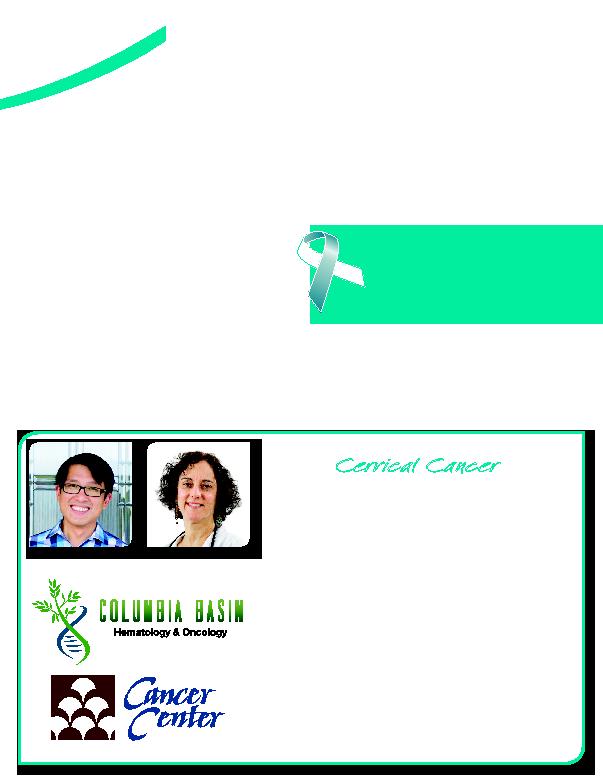
cervix, uterus, ovaries, and surrounding lymph nodes.
This may be followed by chemotherapy and radiation,
in some cases. In a few women, surgery to preserve
fertility may be performed. This type of surgery is best
performed by a gynecologic oncologist (a gynecologist
who has done further training in the treatment of female
cancers). For more advanced stages, the treatment is a
combination chemotherapy and radiation. Treatment
typically takes about two months and is directed by
a medical oncologist who gives chemotherapy and a
radiation oncologist who gives radiation. For cancers
that are diagnosed and treated early, outcomes are
generally good and patients can be cured. For patients
diagnosed with cervical cancer that has spread to other
organs, the treatment, in general, is chemotherapy
alone, and prognosis is poor.
Henrietta Lacks continued radiation tube treatments
until shortly before her death in October 1951 due to
complications from metastatic cervical cancer. She was
31 years old. She was buried, largely forgotten, in an
unmarked grave in Virginia.
The cells that were removed from her cervix, however,
would never be forgotten. Researchers in the 1950's
discovered that the cells could be cultured and continue
to grow, and therefore studied indefinitely. Before this,
other cultured cells would die after a few days. Her cells
would later be known as the immortal "HeLa" cell line
(after the initial syllables of Henrietta Lacks' name). These
cells were used for cancer and HIV research, and were
instrumental in the development of the polio vaccine in
the mid 1950's. Her cells were the first human cells to
be successfully cloned. Henrietta's family was initially not
informed of the use of her cells until the 1970's.
In 1996, Henrietta's contributions to medicine were
finally recognized by the medical community. A
headstone commemorating her life is now located
on the family cemetery, in Lacks Town, Virginia. A
bestselling book, "The Immortal Life of Henrietta
Lacks" immortalizes the life of this woman who once
was buried in an unmarked grave. Her cells continue to
be studied to this day.
Further Reading:
"The Immortal Life of Henrietta Lacks"
by Rebecca Skloot
Centers for Disease Control and Prevention.
www.cdc.gov/cancer/cervical
Eric Gamboa, MD is a hematologist and medical
oncologist with Columbia Basin Hematology and
Oncology, a Network Member of the Seattle Cancer Care
Alliance. His clinical interests include the treatment of
breast, gynecologic, and prostate cancers.
Cervical Cancer
Presenters:
Eric Gamboa, MD
Sue Mandell, MD
Tuesday, January 28th Noon to 1:00 p.m.
Join Dr. Eric Gamboa and Dr. Sue Mandell as they discuss
cervical cancer. This discussion will include the causes of
cervical cancer, its prevalence, issues surrounding surgery
and treatment options. Prevention and survivorship will
also be explored.
Dr. Gamboa is a Medical Oncologist and Hematologist with
our campus partner, Columbia Basin Hematology & Oncology.
Dr. Mandell is a Board Certified Radiation Oncologist and
the Medical Director for the Tri-Cities Cancer Center. A
complimentary lunch will be provided with a reservation.
Please RSVP by January 24th: (509) 737-3427
or online at www.tccancer.org
Dr. Gamboa
Dr. Mandell
T R I - C I T I E S

